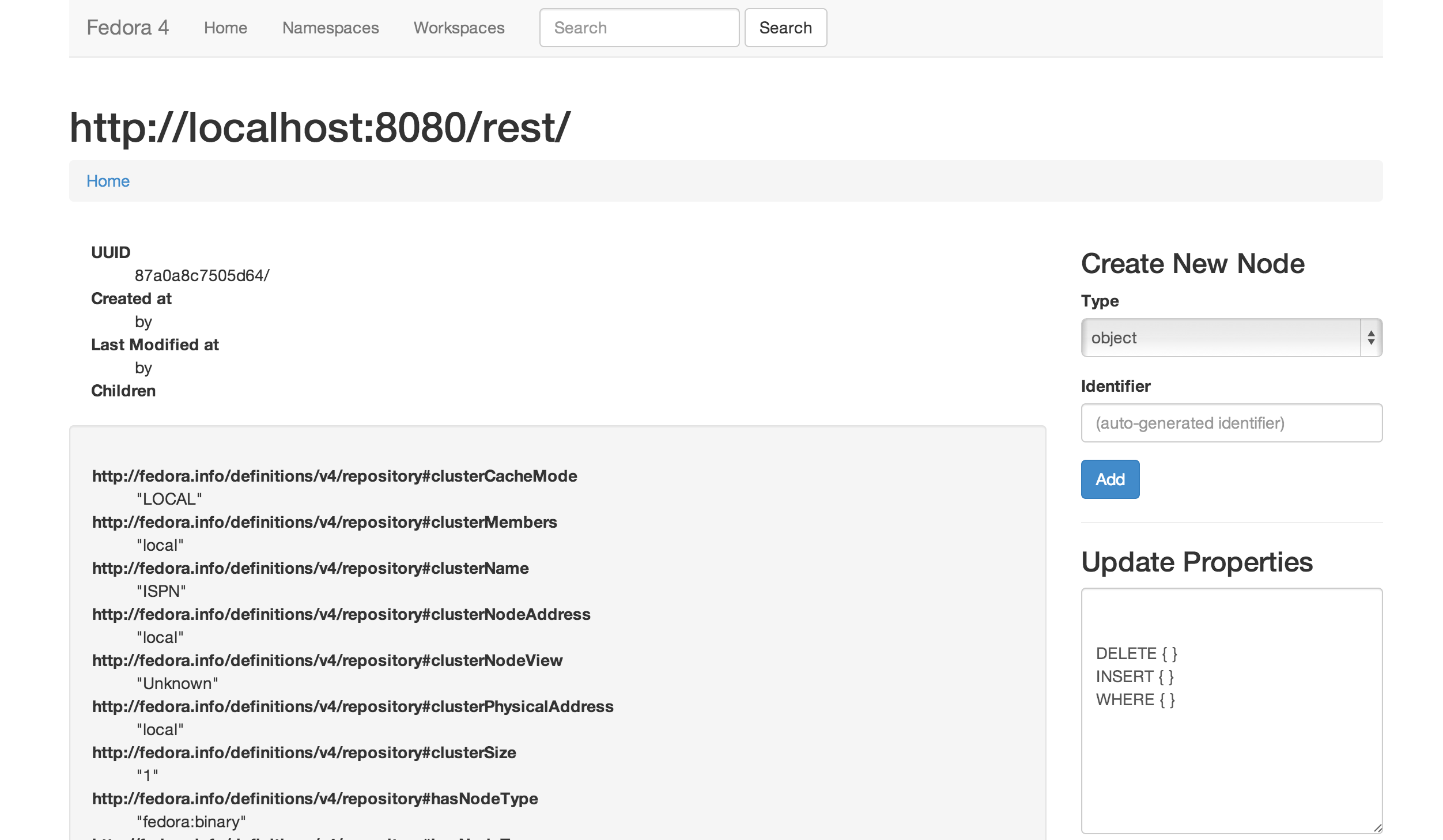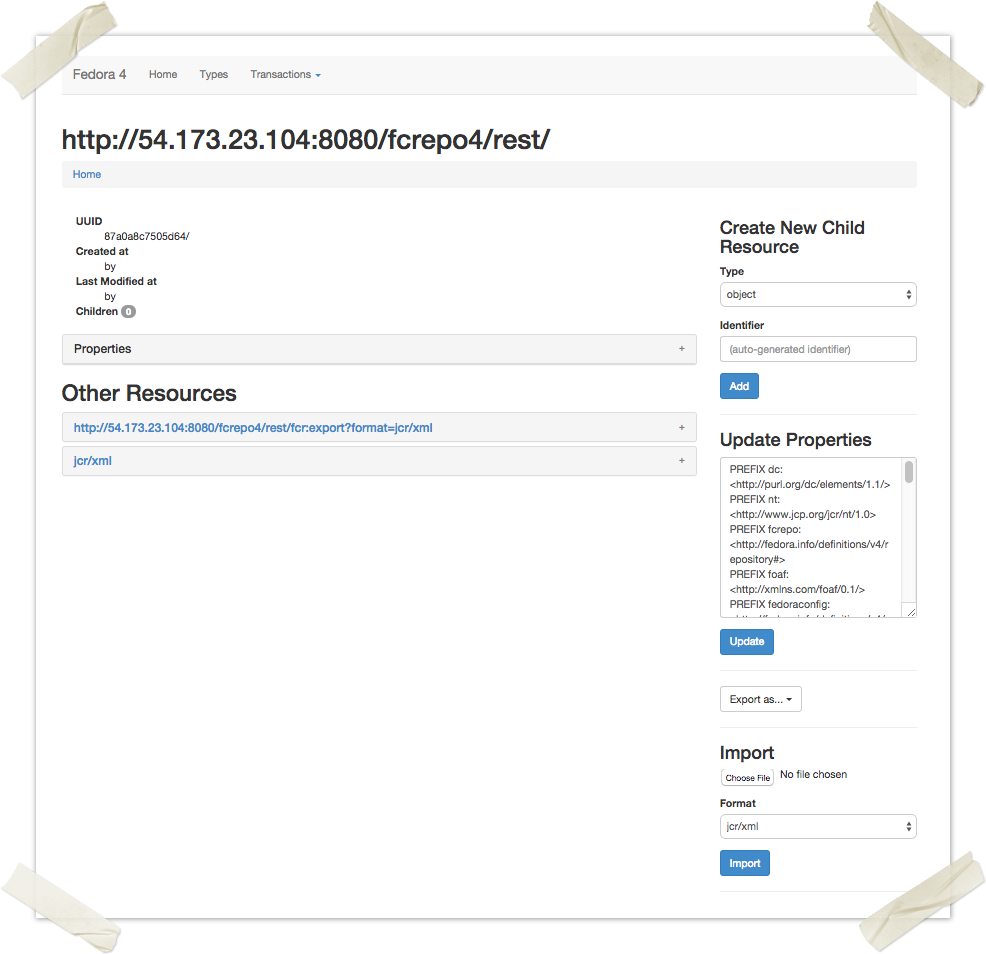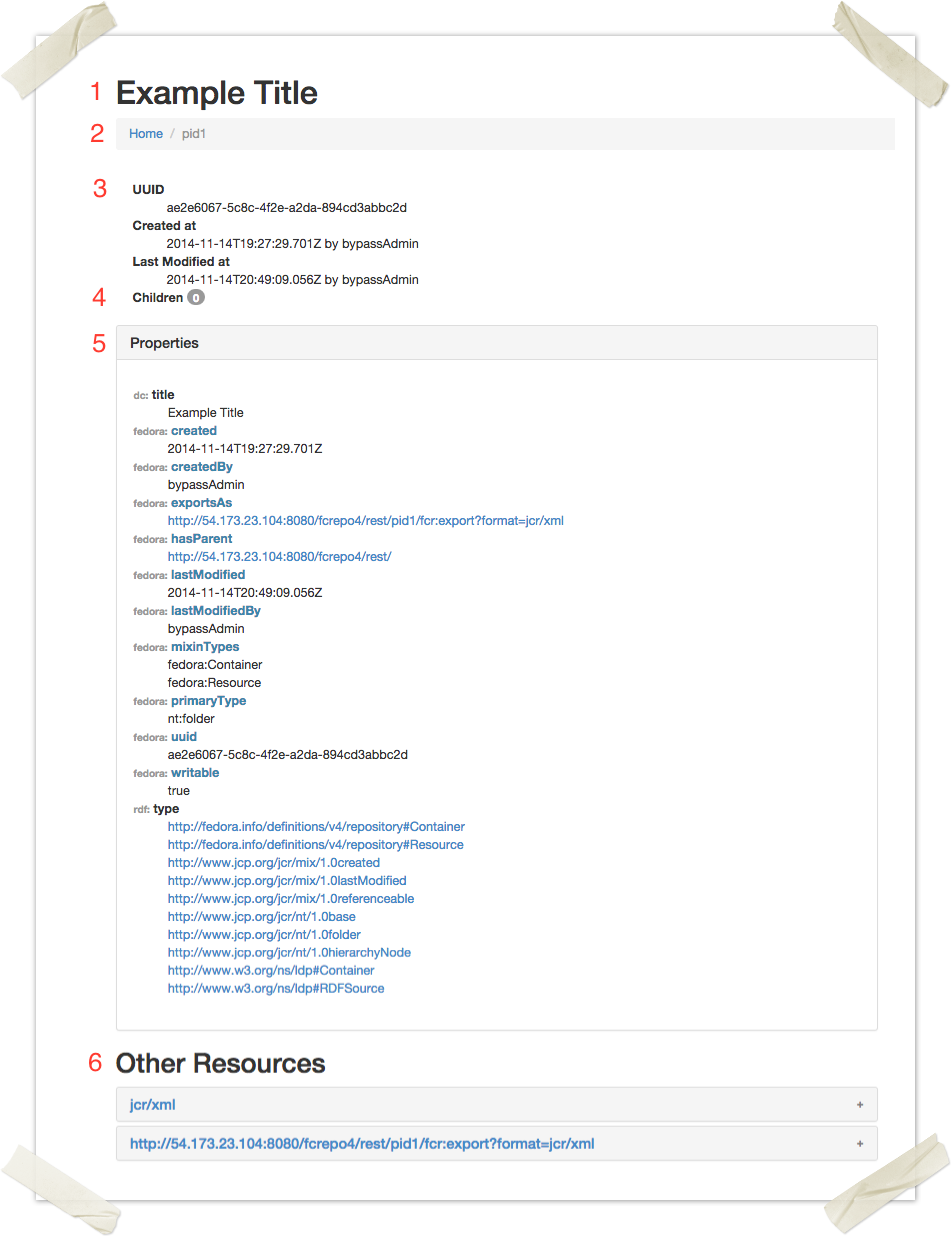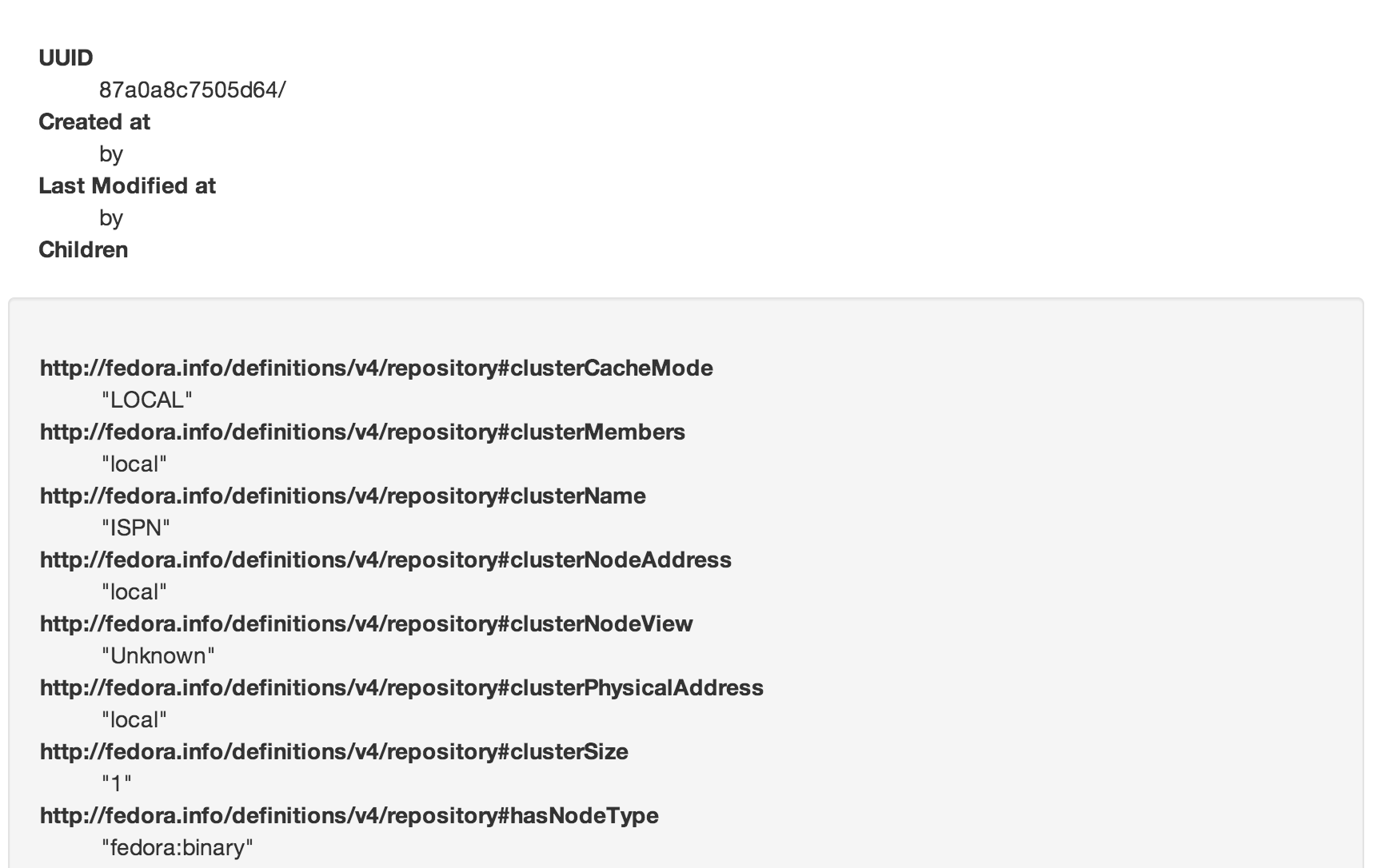Much of the functionality that is exposed through the RESTful HTTP API is also available using an HTML user interface interpreted by your favorite web browser. Whether your request for particular HTTP API endpoints results in an HTML UI or more machine-readable formats is based on content negotiation headers. This tour walks you through the major user interface components when accessing the HTTP API through a web browser.
Home Page
When you access the root path of the RESTful HTTP API you are presented with a rendering of the root level of your Fedora repository
Now that you have Fedora 4 running either as a war deployed to Tomcat or via Maven and Jetty, you can navigate in your web-browser to the HTML front end of Fedora 4.
Which should be located here: http://localhost:8080/rest
The interface is comprised of several regions:
The Navigation Bar
From here you can navigate between Home/Namespace/Workspaces and the search interface.
Home
Is where the heart is, also where you will spend most of your time.
From here you can:
- Ingest new Objects and Data-streams. Create new Resources (Containers or Binaries)
- Inspect the properties of Objects and Data-streamsResources.
- Update the properties of Objects and Data-streamsResources.
- Navigate the Repository Hierarchy of Objects and Data-streams.Resources.
- Import/Export Resources.
- Start Transactions.
The user interface is divided into regions.
- Navigation bar (top)
- Resource information and navigation (center left)
- Optional resource actions (center right)
Navigation Bar
The navigation bar, which appears at the top of each page, includes links to the following:
Resource Information
Information about the resource requested is displayed below the navigation bar, filling the left two thirds of interface.
| Section | ||||
|---|---|---|---|---|
|
...
Navigate Hierarchy
Just below the Navigation bar, we have the path to the Object (Which is also it's identifier) displayed as the page's title.
The displayed breadcrumbs can be used to navigate back up the hierarchy to the ancestors of the currently display object.
Inspect Properties
Here all the properties that describe the object are enumerated, as well as some of the child Object / Data-stream properties.
Ingest
You can ingest new Object's and Data-streams via the "Create New Node" widget. You can either give your own identifier or use an auto-generated one.
Newly ingested Objects and Data-streams will occur under the Object in which you are currently viewing.
|
Actions
| Include Page | ||||
|---|---|---|---|---|
|





